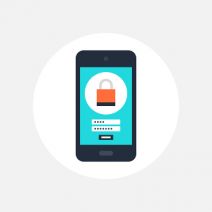Did you know the oldest known lock ever discovered is thought to be 4,000 years old? Discovered in the Khorsabad palace ruins in modern-day Iraq, it used wooden pegs to keep a large wooden bolt secure. For millennia, we've understood the need to protect what's valuable.
You probably wouldn’t want to rely on wooden pegs to secure your business, but modern businesses are still using a lot of outdated and ineffective physical security measures. Modern solutions bring a wide variety of benefits beyond just keeping your doors locked; they offer accountability, automation, and accessible analytics. Let’s take a look at some critical physical security mistakes many business owners make and how modern solutions can truly safeguard your organization.

 Most companies have to have a workforce, generally one of considerable size. Unfortunately, the more users you have, the more potential risks you run into. Of course, your workforce doesn’t collectively intend to be a se
Most companies have to have a workforce, generally one of considerable size. Unfortunately, the more users you have, the more potential risks you run into. Of course, your workforce doesn’t collectively intend to be a se